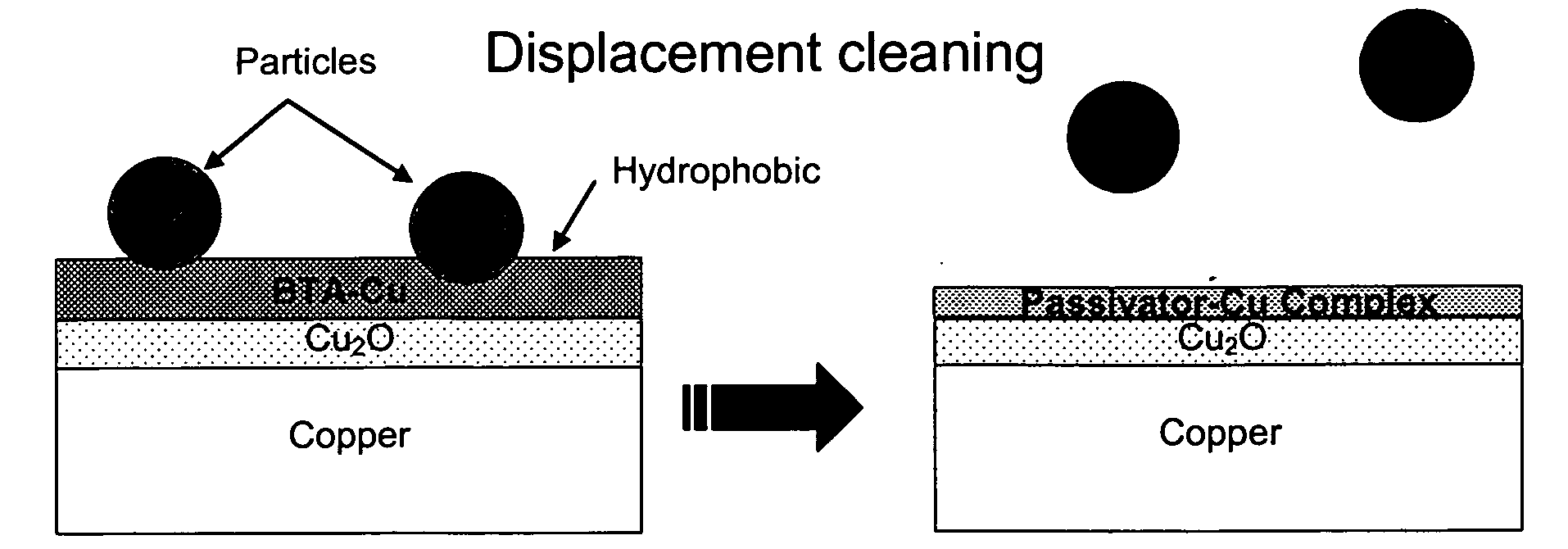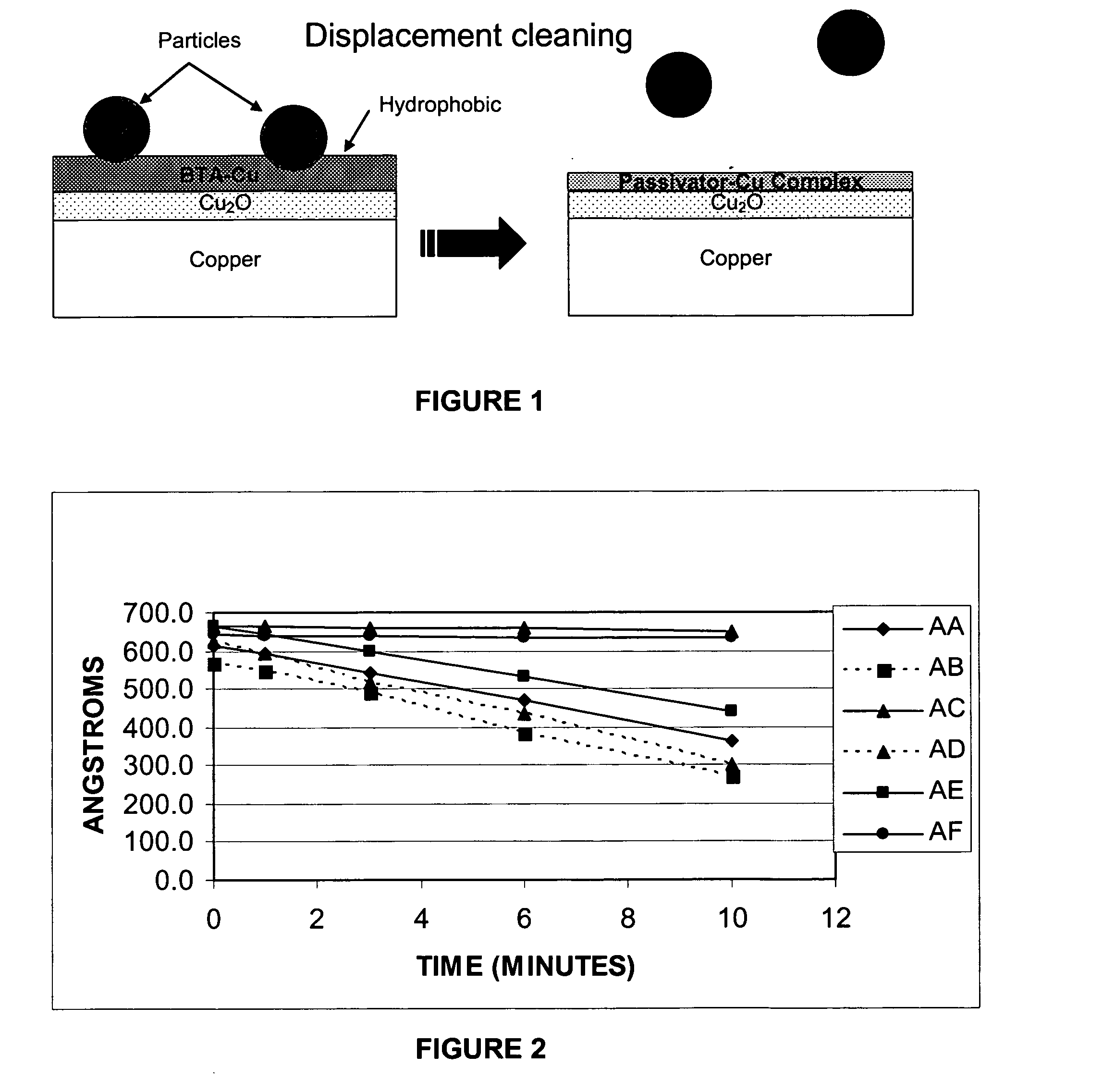Copper passivating post-chemical mechanical polishing cleaning composition and method of use
a technology of passivating post-chemical mechanical polishing and cleaning composition, which is applied in the preparation of detergent mixture compositions, cleaning using liquids, detergent compounding agents, etc., can solve the problems of reducing the efficiency of these processes for removing smaller sized particles, and affecting the cleaning effect of wet cleaning techniques
- Summary
- Abstract
- Description
- Claims
- Application Information
AI Technical Summary
Benefits of technology
Problems solved by technology
Method used
Image
Examples
example 1
[0230]The efficacy of formulations AA-AF for inhibiting copper corrosion (i.e., minimizing copper etch rate) was evaluated. The device was a blanketed copper wafer. The wafer in each instance was immersed in the respective composition for 10 minutes at 50° C., followed by a deionized water rinse and spin dry. Prior to immersion, the samples were measured using the 4-point probe measurement technique to determine the thickness of the substrate as a function of resistivity. A regression curve was generated and the thickness of the copper determined as a function of resistivity to derive the etch rate of copper in each composition. The results are illustrated in FIG. 2.
example 2
[0231]A patterned wafer having residue thereon was immersed in a beaker of agitated (250 rpm) Formulation AC for 2 minutes at 40° C. The patterned wafer included a FSG bond pad on a copper surface. Subsequent to the clean, the wafer was rinsed with DI water, dried and submitted for scanning electron microscopy (SEM). The etch rate of copper was determined to be 1.4 Å min−1.
[0232]Electron micrographs of the control wafer before and after immersion are shown in FIGS. 3A and 3B, respectively. It can be seen that the residue was effectively removed following just 2 minutes of cleaning.
example 3
[0233]A post-via etch barrier break-through wafer was immersed in beaker of agitated (250 rpm) Formulation AC for 2 minutes at room temperature. During the via-etch process, the wafer was subjected to a 50% over etch to provide heavy sidewall polymer residue. Subsequent to the clean, the wafer was rinsed with DI water, dried and submitted for SEM.
[0234]Electron micrographs of the control via wafer and a cleaved control via wafer before immersion are shown in FIGS. 4A and 4B, respectively. Electron micrographs of the via wafer and the cleaved via wafer after immersion are shown in FIGS. 5A and 5B, respectively. It can clearly be seen that the residue remaining following the via etch and over-etch processes was substantially removed from the sidewalls of the vias (see, e.g., FIG. 5B).
PUM
| Property | Measurement | Unit |
|---|---|---|
| pH | aaaaa | aaaaa |
| pH | aaaaa | aaaaa |
| dielectric constant | aaaaa | aaaaa |
Abstract
Description
Claims
Application Information
 Login to View More
Login to View More - R&D
- Intellectual Property
- Life Sciences
- Materials
- Tech Scout
- Unparalleled Data Quality
- Higher Quality Content
- 60% Fewer Hallucinations
Browse by: Latest US Patents, China's latest patents, Technical Efficacy Thesaurus, Application Domain, Technology Topic, Popular Technical Reports.
© 2025 PatSnap. All rights reserved.Legal|Privacy policy|Modern Slavery Act Transparency Statement|Sitemap|About US| Contact US: help@patsnap.com



